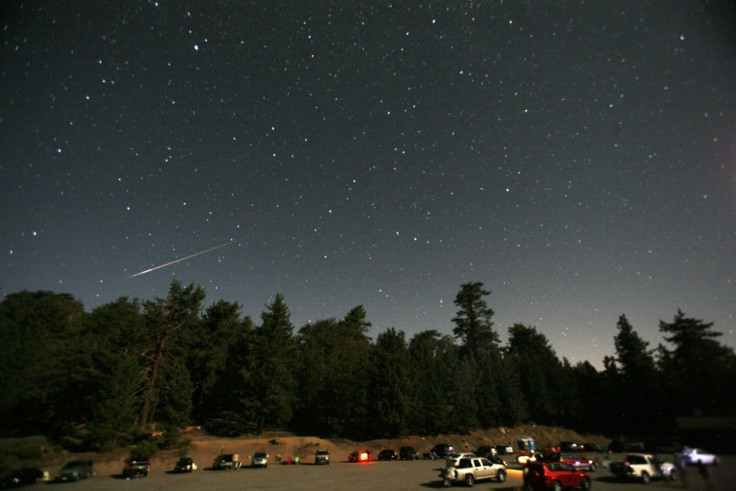Perseid Meteor Shower 2014: How and Where to Watch Shooting Stars in UK Cities

The Perseid meteor shower 2014 is set to peak between 11 and 13 of August, producing up to 100 meteors per hour.
It is the best meteor shower of the year for those living in the Northern Hemisphere and builds gradually throughout July.
Although this year it is set to contend with a huge supermoon, meteors should be visible throughout the night, with the best time to watch being the few hours before dawn. EarthSky also suggests trying to view the shower early in the morning too, as some bright Perseids "will probably be able to overcome the moon-drenched skies".
The Perseid meteor shower radiates from the constellation Perseus, but the meteors will be visible in all parts of the sky. They originate from the comet 109P/Swift-Tuttle and are travelling at around 59km per second. Normally they leave persistent trains.
How to watch:
To watch the Perseid meteor shower, Nasa said it is worth trying to get as far away from urban areas as possible: "The best thing you can do to maximise the number of meteors you'll see is to get as far away from urban light pollution as possible and find a location with a clear, unclouded view of the night sky."
The space agency said to wear warm clothes and to take blankets to keep warm, as well as something to sit or lie down on. Let your eyes adjust to the darkness and do not look at any one specific spot.
"Put away the telescope or binoculars. Using either reduces the amount of sky you can see at one time, lowering the odds that you'll see anything but darkness. Instead, let your eyes hang loose and don't look in any one specific spot. Relaxed eyes will quickly zone in on any movement up above, and you'll be able to spot more meteors. Avoid looking at your cell phone or any other light. Both destroy night vision."
Where to watch:
London
The WaterWorks Nature Reserve in north-east London is listed by Dark Sky Discovery as an area good for stargazing. It is located near Clapton and Leyton Midland Road stations. People willing to travel further afield could also try the Fieldgate Centre Kingsclere, where the Newbury Astronomical Society will be hosting a special event on Wednesday 13 August.
Birmingham
Warley Woods in Birmingham is where the Birmingham Astronomical Society meets to stargaze. It is accessible by bus or car from the city centre. Barr Beacon is also a recommended spot, being the highest point in Walsall and offering 360 degree view of the landscape around.
Manchester
Heaton Park in Manchester normally hosts the Heaton Park Astronomy Group. It is the largest park in Greater Manchester and is located north of the city centre, between Prestwich and Middleton. If you want to get an even better view, head to the Surprise View car park in the Peak District on the outskirts of Hathersage – it offers a panoramic view of the Hope Valley and is a Dark Sky Discovery site.
Edinburgh
People in Edinburgh should head out of the city and make their way south to Newbattle Abbey College, which is part of Dark Sky Scotland. It is just off the B703 Newbattle Road. Those wishing to stay closer to home can head to the Royal Observatory Edinburgh in the Hermitage of Braid and Blackford Hill Local Nature Reserve.
Glasgow
According to a member of the Stargazers Lounge, Mugdock Country Park north of the city is a good spot for stargazing, as is Muirshiel Country Park, which is near Loch Winnoch and has "very dark" skies. They also noted Dams to Darnley Country Park with Balgray Reservoir is a good spot.
Cardiff
Cardiff stargazers should make their way to the Brecon Beacons – about an hour away from the city – as they will find some of the darkest skies in the UK. North of Pontypridd and Maesteg, people can also head to the Dare Valley Park outside of Aberdare Town Centre. It has a large car park where you can observe the night sky and good horizons, with just a slightly obstructed view to the west.
Belfast
About 25 miles south of Belfast is Oxford Island National Nature Reserve. It is on the southern shores of Lough Neagh and is about three miles from Lurgan. Alternatively, the Northern Ireland Amateur Astronomy Society will be hosting a special Perseids barbeque on either the 12 or 13 August. They will be meeting at the Killylane Reservoir at about 9.30pm.
© Copyright IBTimes 2025. All rights reserved.






















